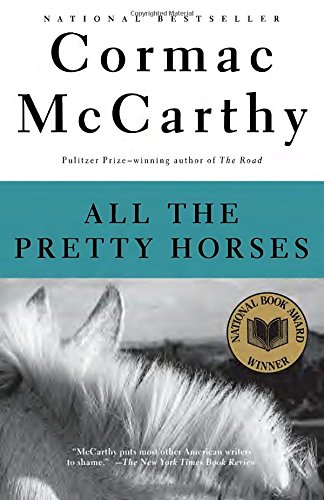Confined to a three-man tent on a rainy day in the canyons of southeastern Utah, I continued by lantern light my rereading of Cormac McCarthy’s novel All the Pretty Horses, first published a quarter-century ago as the first volume in The Border Trilogy, and got a good start on its immediate sequel, The Crossing.
McCarthy’s books are notable for (among many other things) being romances, so far as the storylines go, presented in a hyperrealistic style characterized by its attention to the most excruciatingly observed detail. The author means to render the visual elements of his writing with photographic exactitude, and the aural ones with the fidelity of a tape recorder, to achieve so far as is humanly possible the most complete replication of reality in its every aspect. The result is that elements of the physical world, the natural one especially, become characters in their own right, and language (as Shelby Foote once observed), the ultimate hero, or at least one of them, of McCarthy’s work. The trilogy, set in Texas and Mexico around 1949-50, recounts the experiences of John Grady Cole (All the Pretty Horses) and Billy Parham (The Crossing), finally brought together in The Cities of the Plain, in the primitive, almost primeval, outback of postrevolutionary Mexico, carefully traveled and researched by the author himself.
Though McCarthy has his antecedents in American literature, his novels are in many ways entirely unprecedented, and almost wholly original. Re-encountering his books is always a stunning literary experience, particularly when one reads them in the geographic regions (the South, the Southwest, and Mexico) in which the narratives are set.
—Chilton Williamson, Jr.

Leave a Reply